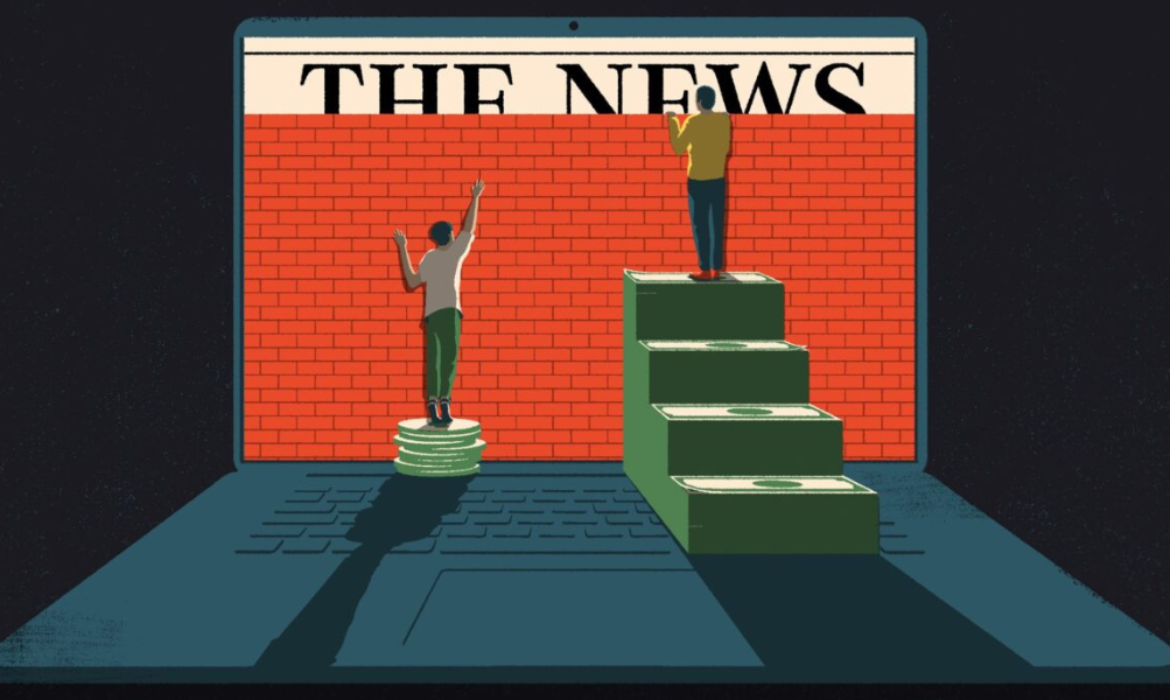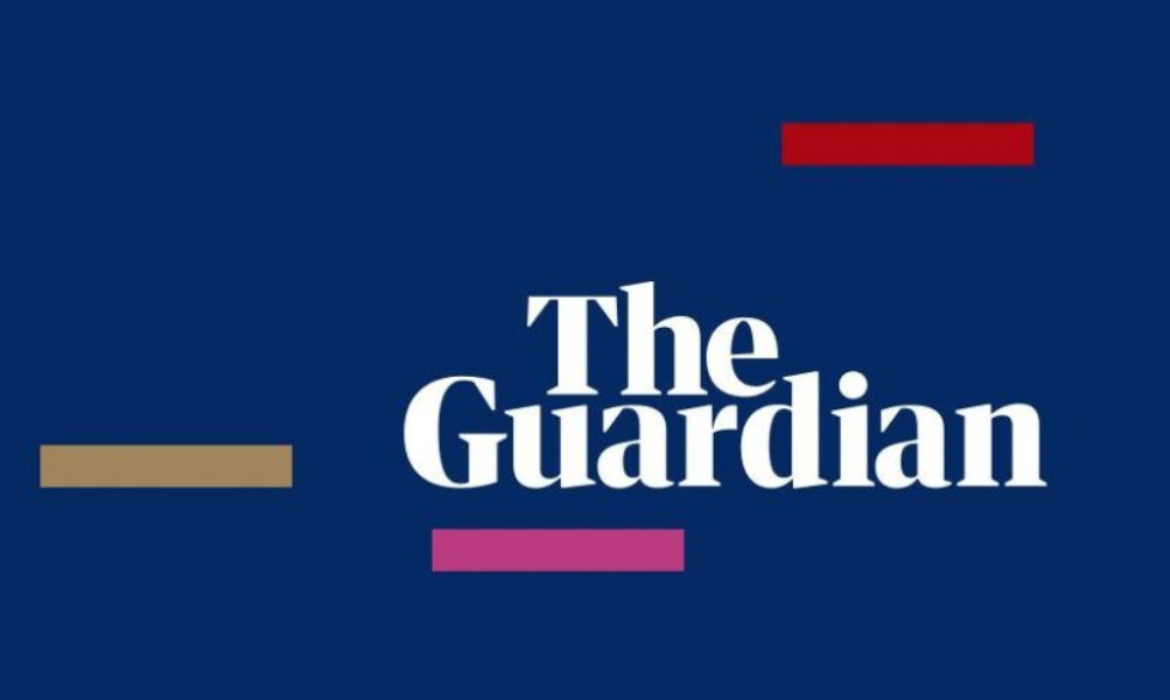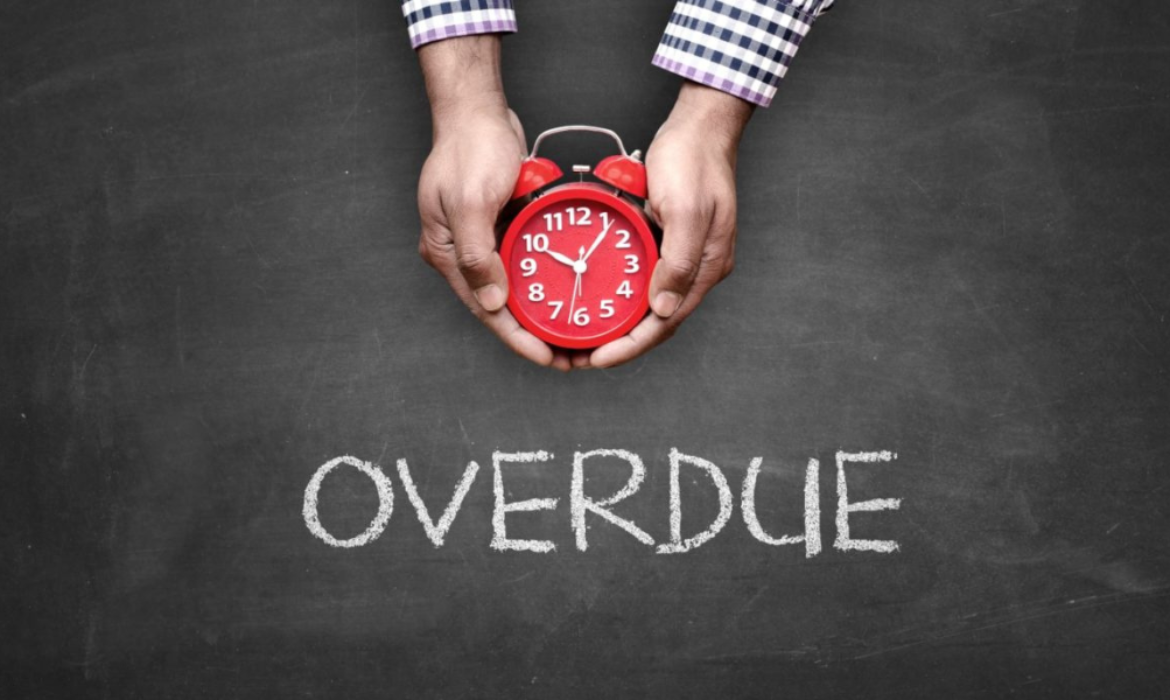No Newsroom To return To, As Many Newspapers Retire During COVID
After a rough phase of destruction by the COVID pandemic, media companies are planning strategies to re-open their businesses. The bad news is that many of them don’t have an office to return.
The Tribune released a statement last week. They have decided to close their New York daily newspaper and several other offices at different locations. According to a statement provided by them to the New York Times, they would “reconsider their need for physical offices” as they are fighting the way through pandemic and “as needs change.”

Image credits: TVnewstalk
According to Fran Wills, CEO of the Local Media Consortium, media houses aren’t just buildings; they are the landmarks, representing culture, heritage from centuries. Frank is an owner of around 4,000 memberships. These memberships include radio, newspaper, online-only news outlets, and TV. Frank added, “They are a big part of a lot of the downtowns in a lot of their communities.” The pandemic broke the backbone of the news industry.
Emily Bell, professor at Columbia Journalism School, tweeted last week, she stated that the closure “represents institutional weakening. The dilution of solidarity against power, the snuffing of a beacon,”
They are the much needed times for newsrooms and newspapers to action around the world, especially in the US. With an ongoing pandemic and rising anger of communities to end discrimination and upcoming elections in November, the US needs its media houses even more now, than ever.

Image credit- Theadvocate
However, media houses have lost the trust of their readers. A 2019-2020 Gallup and Knight Foundation poll of more than 20,000 Americans showed that the Americans no longer trust their media and have a negative viewpoint towards them. The numbers are even lower when compared to the poll conducted in 2017.
The summary of the report states, “Americans have not only lost confidence in the ideal of an objective media, they believe news organizations actively support the partisan divide.”
The biggest challenge faced by the industry is to maintain the real state that they have accommodated. With several heads to feed, it became difficult for the newspapers to sustain their accommodated newsroom, which was the finest venues, but mostly rented. Also, the decline of the trust of their audience has forced them to stay in low visibility. Now, they gradually try to step up on the ladder of consumer trust, to re-gain their reputation.
Although, the possibilities of media houses losing their trust with the audience even increase with them being in lower visibility. These times should be considered dangerous, the lower visibility might propagate a negative sentiment across the audience’s minds, as the industry work on its cost-cutting plans involving the evacuation of the real estate.
In 2017, The Dallas morning news downsized itself from the famous building “Rock of Truth”. However, they made a smaller iconic version of the monument. The new inscription on the glass states, “Build the news upon the rock of truth”. The new owner of the building states that they will preserve the exterior of “Rock of Truth”.

Image credit – Markd.Roberts
According to Wills from Local Media Consortium, “It would be beneficial for companies considering moving out of their offices to continue to have some sort of presence or some sort of way their landmarks can be preserved in their communities.”
Jeff Jarvis, a journalism professor at the City University of New York, thinks that this could be an opportunity for the newspapers to go back to their audiences. It will also promote cross-team collaboration and can be useful for sales teams which can spend more time with their audiences.
According to Jarvis, “Slack is a poor substitute for the sound of ringing typewriters, but you start to see the beginnings of that kind of office buzz being recreated.”
The factor of collaboration is not just limited to the sales teams and newsrooms. Even the local outlets are collaborating.
Rick Edmonds, a media business analyst at the Poynter Institute, stated, “Collaborations among formerly competing papers and other news entities have taken off like a rocket over the last few years.”
As an example, Story share launched in February by the AP, a tool that allows more than two dozens of newspaper to share their content plans and also helps them to republish each other’s stories. Nearly, 18 news channels joined hands in Florida to cover the climate changes happening in the states. These included The Miami Herald and Tampa Bay Times.
However, journalism seems to be entangled in the cobwebs of old myths, and traits of the days of ink and paper. Journalism needs to break its chains and explore the possibilities of ideas and innovation.
Advertisers Lose An Approximate Of $130 Million In Fraud Dubbed As Hydra
In a revelation by Protected Media, a security firm based in Israel, advertisers lost an approximate of $130 million in an advertisement fraud. They have named the accused as Hydra, and there is an ongoing search operation target to find the accused.
However, Google and other advertisement tech firms are looking for the accused, but yet no one knows who is behind this million-dollar fraud.
Hydra!

Image credit – Medium
The given name is perfect for a criminal community. Hollywood movies often have such names for their villains.
Although, it is indeed a villain in the real world which is responsible for fraudulent activities and stealing of $130 million; valuable hard-earned money of the advertisers.
The problem is, it still exists and has not been identified.
Rachel Nyswander Thomas, COO of TAG said, “Hydra is an accurate name because the impressions are being sold through many networks and being diluted — there are many heads to slay.”
The statement certainly raises concerns.
It is said to be creating fake app traffic. The traffic goes undetected by humans, ultimately costing them money for nothing.
Even though it was detected nearly a year ago by Asaf Greiner, CEO at Protected media, it is hard to catch the people behind the fraud scheme. These are clear signs that the fraud scheme is no ordinary fraud that advertisers or tech firms have faced in the past.
Reportedly, it portrays itself as mobile phones to create small amounts of traffic and then diverting the ad-traffic into the areas where enormous money is getting invested.
There is an ongoing search operation in progress; “Operation Abolish Hydra.”
However looking at the scenarios, it will take some outstanding measures to get to the root of such clever fraud techniques.
There is an ongoing fight against fraud, piracy, malware, and the absenteeism of transparency in the world of digital marketing.
To fight such malpractices, and eliminate the risk of fraud by these malpractices, American Affiliation of Promoting Companies (4A’s) and Affiliation for Nationwide Advertisers (ANA) and IAB created TAG. The leadership council of this community contains names like ad platforms, companies, and advertisers at the side of, Facebook, Google, NBCUniversal, GroupM, and Dr. Pepper Snapple Community.
Even when Google checked things with its Advert Traffic Quality team, it confirmed the fraud is costing people their money. Although, according to Google, it has only lost the least volume of marketing from the scam operation.
In the meantime, TAG launched the operation, “Operation Abolish Hydra.”
The operation allowed digital ad sellers to report any fraudulent activity to TAG. Therefore, ultimately helping in the detection and control of this fraud.
Rachel Nyswander Thomas, COO of TAG said, “What is more modern is the diploma to which or no longer it is specializing in in-app inventory and that or no longer it is hiding in more modern ways.”
In a statement Asaf Greiner, CEO at Protected media acknowledged:
“Promoting platforms are ashamed of being victimized and they’re threatened by it.”
Also, “They’ll compile true into an express where an advertiser asks them to pay them abet. Most CMOs need to specialize in their subsequent job. It would no longer find excellent on anybody’s resume.”
A Google spokesperson stated the following while addressing the issue:
“We commend Accurate Media for sharing facts on the Hydra ad fraud blueprint and participating with the broader exchange, which is distinguished to minimizing effect.”
He also acknowledged that “The largest takeaway from this case is the need for all mobile app developers to put into effect app-adverts.txt records data to mitigate app spoofing risks.”
A spokesperson from TAG said:
“It will lift time to construct a culture of possibility-sharing.”
Further stating that “We stamp original to this as an exchange. However other people are initiating to possess an extensive consciousness that or it is no longer almost about taking half in whack-a-mole yourself.”
India Shook China: Banned 59 Major Chinese Mobile Applications
In a recent decision taken by the Indian government, 59 Chinese mobile applications will be banned, in India. The list of 59 applications included some major, names from the market. TikTok, which had a higher share of its business in the Indian market, is included in this list.
It would be interesting to know that in 2019, when TikTok was briefly banned, in India, ByteDance, the parent company of TikTok reportedly lost more than $500,000 daily. The User share of TikTok has increased tremendously since then in the Indian market. Therefore, the news must have come as a disaster for the company.
The Indian government took this decision after the Indian intelligence informed the government about the potential risk of security from these applications.
Since the brutal face-off between the Chinese and Indian army in the “Galwan Ghati“, a place in Ladakh, the air is stiff between both the countries.
In a press release following statement was issued by the government stating, “The Ministry of Information Technology, invoking its power under section 69A of the Information Technology Act read with the relevant provisions of the Information Technology (Procedure and Safeguards for Blocking of Access of Information by Public) Rules 2009 and in view of the emergent nature of threats has decided to block 59 apps since in view of the information available they are engaged in activities which are prejudicial to sovereignty and integrity of India, defence of India, the security of the state and public order”.
The press release further mentioned, “The Computer Emergency Response Team (CERT-IN) has also received many representations from citizens regarding the security of data and breach of privacy impacting upon public order issues,”
It clearly stated that this move is to “safeguard the interests of crores of Indian mobile and internet users”.
Since the tension in Ladakh, the anger against TikTok and other Chinese application/equipment was seen, in the Indian market.

The rating of the application started falling continuously on the platform after the incident took place. On Apple store, the Chinese app used to rank in the top-5 free applications which later dropped down to 10th place in the ranking.
Similarly, TikTok saw a fall in ranking on the Google Play store and slipped from third to the fifth position in India, still managed to stay in the top 10 free applications.
It is not just the country of India, which banned the Chinese application!
Taiwan also banned a few Chinese applications due to security concern. However, in Germany, Zoom was restricted for the usage, Including other apps.

Robert O’Brian, the US national security advisor, has clearly stated that the Chinese applications are used as a weapon by the Communist Party of China(CPC) to spread its ideology across the globe.
The younger generation grew highly fond of this Chinese application. The application has this younger fan base not only in India but also in countries like the US and China.
TikTok, the highest downloaded app, had more than 2-billion users. India turned out to be the largest contributor in this success, contributing 611 million user downloads.

Image credit – Sensor report.
According to the report by sensor tower, the Chinese application grew in popularity during the lockdown phase in this epidemic.
The list of 59 Chinese mobile apps included:
- TikTok
- Shareit
- Kwai
- UC Browser
- Baidu map
- Shein
- Clash of Kings
- DU battery saver
- Helo
- Likee
- YouCam makeup
- Mi Community
- CM Browers
- Virus Cleaner
- APUS Browser
- ROMWE
- Club Factory
- Newsdog
- Beauty Plus
- UC News
- QQ Mail
- Xender
- QQ Music
- QQ Newsfeed
- Bigo Live
- SelfieCity
- Mail Master
- Parallel Space
- Mi Video Call Xiaomi
- WeSync
- ES File Explorer
- Viva Video QU Video Inc
- Meitu
- Vigo Video
- New Video Status
- DU Recorder
- Vault- Hide
- Cache Cleaner DU App studio
- DU Cleaner
- DU Browser
- Hago Play With New Friends
- Cam Scanner
- Clean Master Cheetah Mobile
- QQ Security Center
- Wonder Camera
- Photo Wonder
- QQ Player
- We Meet
- Sweet Selfie
- Baidu Translate
- QQ International
- Vmate
- QQ Launcher
- U Video
- V fly Status Video
- Mobile Legends
- DU Privacy
Nadim Samara Quits Omnicom After Being With Them For 19 Years
CEO of Omnicom Media Group MENA, Nadim Samara has decided to quit OMG. He will be relieved from his role in OMG, on 30 June 2020. This decision was taken after a mutual agreement between Nadim and OMG.
OMG is parent company group for PHD, Hearts and Science media agencies and OMD.
From 2016 to 2018, Nadim had been the CEO of OMD’s UAE operations. Later, he got promoted to become CEO of OMD MENA. In June 2019, Nadim became the CEO of OMG MENA.
To make sure the smooth working of the group, due to the vacant position of CEO, Ellie Khouri, the Executive Chairman of the group, has decided to add the functioning of CEO to his role. He was handling this role before Nadim got promoted to this job responsibility.
Khouri said, “Nadim’s career at Omnicom Media Group, spanning 17 years, has been very impressive and his contribution to our group’s development cannot be overstated. As well as a consummate professional, we bid farewell to a dear friend with whom we’ve shared countless experiences, challenges and successes. We wish him nothing but the best for his next career move.”
It would be exciting to know, “What would be the next big step by Nadim Samara after leaving OMG?”
The Guardian Introduces “The Registration Wall” To Collect First Party Data
Google and Apple have already initiated the process of discarding the third-party cookies, in their browsers. Similarly, The Guardian is asking people to sign-in, to help build the first-party data strategy.
The Guardian, in December, has initiated a testing model for its “Registration Wall”, including the only selected audience. This was shared in a post, by Caspar Llewellyn Smith, who is also a chief product officer at The Guardian.
According to him the goal of the testing is to portray more relevant advertisement to the customer and readers, this will also provide financial stability to the publishers.
The post started, “Asking readers to sign in provides us with more information that we can use to personalize our approach in asking for support, to serve advertising (with readers’ consent) and to create a better user experience.”
When a reader clicks on an article, an option to register for free appears on the screen. The user can opt for a “Not now” option if the user is not interested.

Image Credit -Digiday
In the case of the user register, they get the perk of posting comments, exclusive access to the editorial section, and they can also opt for gift cards and discounts.
This helps the publishers to understand user preferences. The user and publishers can keep a track of the number of articles read by the user in a month.
Alice Pickthall, a senior analyst at Enders says, that it is a good job. “Registration is part of the funnel to growing reader engagement and donations while improving advertising quality and targeting so the benefit will be twofold to both strands of revenue.”
Registration walls collect the first-party data, this helps them to empower the content choice of the audience. It also, increase the accuracy of ad-targeting.

Image credit -Wikipedia
Even newspapers like the New York Times, Tribune Publishing, Hearst Newspapers are considering to implement registration walls on their websites.

Image credit – UnderConsideration
With the help of registration walls, the publishers can have a better understanding of the users’ psych and therefore, they can target the ads according to the user preferences.
The Registration Wall leads publishers to a ten times higher conversion rate, as reported by the subscription platform Piano.
According to Thomas Beakdal, a media analyst, the first-party data helps to retain the customer, “You can’t do good churn analysis without first-party data.”
Even, the first-party data helps to increase the number of subscribers.

Image credit – Twipe
According to Nordic publisher Schibsted, an increase of subscribers was noticed when they analyzed their first-party data and understood the reason behind the cancellation journey of their users.
As the concept of third-party cookies is dying, the publishers’ community must build a first-party database. It will help publishers like Vox, Business Insiders and The Washington Posts in sustaining their businesses.
A registration wall will help publishers to collect details like email, phone number, name etc. helping them efficiently targeting their audience.
In just one year of installing registration wall on their website, The New York Times swears to never use third-party cookies for advertising.

Image credit – CNN en Espanol
The Guardian intends to provide a wonderful journalism experience to their audiences. They don’t want to compromise on it at any end. They feel that it’s a civic right of a human to get accurate information during these tough times of pandemic. The introduction of the registration wall is another step in that direction.

Image Credit – The Guardian.
Online news platforms are experiencing heavy traffic on their website. Although, the revenue generated by advertisement is pretty low.
It’s astonishing that in March, The Guardian experienced a record-breaking user interaction on its unique browser. Since February, the number doubled and reached toa recorded of 336 million. As in February, this number was recorded to be 191 million.
Both, the number of daily visitors, and weekly visitors on the website have increased. In October 2019, The Guardian set a record of the maximum number of readers with some 750 million. This year in March 2020, it broke its record by reaching some 2.17 billion.

Image credit – Mediaweek
However, the data showed that The Guardian in the U.K experienced a downfall of the user database in April 2020. In March 2020, the number of readers was 35.7 million. In April it dropped down to 34.7 million. Still, it’s great when compared to February 2019, 25.6M unique readers.
Due to Covid-19, the publishers have seen a decrease in spent on advertisements. There is a downfall of 65% on the spent.
However, The Guardian is all set to achieve 2M paying supporters by the year 2022.
Major Brands Condemn George Floyd’s Death | Supports Black Lives Matter
- Major brands released various statements condemning racism and voicing their support for protesters.
- The protests intensified across the U.S after the death of Geroge Floyd, a black man who died in police custody in Minneapolis on 25th May.
Following a long history of Black Americans losing their lives in police custody, the death of George Floyd has sparked nationwide protests and civil unrest.
Why it matters: Even the brands that remained silent against social injustice, such as ad agencies or marketing professionals have raised their voice in the Trump era to fill the void created by the government.
Driving the news: Brands like Twitter changed their official display image as a part of the change. Other brands like Google, YouTube, Disney, Netflix, Amazon followed the suit.
However, the brand’s support has received mixed reactions of praise and criticism. Supports that include tangible steps to action like donation or building up of links and resources with statements are welcome to combat racism. However, generic statements that lacked depth are being accused of commercializing the tragedy.
L’oreal drew criticism from British model and activist Munroe Bergdorf, who claimed that she was previously dropped out from a campaign for speaking on racism.
https://twitter.com/MunroeBergdorf/status/1267460238678069249?ref_src=twsrc%5Etfw%7Ctwcamp%5Etweetembed%7Ctwterm%5E1267460238678069249&ref_url=https%3A%2F%2Fwww.thedrum.com%2Fnews%2F2020%2F06%2F01%2Fbrands-show-solidarity-with-george-floyd-protests-can-they-contribute-real-change
Facebook donated $10 million but received backlash from critics. Social media is still taking heat for not taking a stand against the controversial post of President Trump that promoted violence, unlike the competitor Twitter.
One commenter wrote on the Facebook social media post, “If Facebook was serious then Facebook would censor the president’s inflammatory posts the same way the rest of us are censored. This is just lip service at this point.”
Facebook employees staged a virtual walkout over the issue and one employee, software engineer Timothy Aveni, wrote on LinkedIn about why he’s leaving the company altogether.
How have brands and media companies shown solidarity: They took to social media to support the Black Lives Matter movement using a set of hashtags like #BlackLivesMatter and #JusticeForFloyd.
- Social posts go black for Blackout Tuesday
Scroll through any social feeds on Tuesday, June 2 and there will be a sea of black images on Facebook, Instagram, Twitter, and other platforms with the hashtag #BlackoutTuesday. Brands, celebrities, ad agencies, influencers are participating in support of racial injustice.
Sony postponed a PlayStation 5 event to give fans a sneak peek at the games in a tweet. On the other hand, prominent music labels and musicians participated in Blackout Tuesday with hashtags – #BlackoutTuesday and #TheShowMustBePaused. Others are participating by staying silent on social media.
In solidarity with the Black community, our employees, our friends, our families, and our colleagues across industries we are proud to take part in #BlackoutTuesday.
Savage X Fenty will NOT be conducting any business on Tuesday, June 2 – globally.
— Savage X Fenty by Rihanna (@SavageXFenty) June 2, 2020
Visit this link for a list of actions you can take: https://t.co/tjNjsYlTft #BlackLivesMatter #TheShowMustBePaused #BlackoutTuesday pic.twitter.com/iKvf84Ioav
— Conan O'Brien (@ConanOBrien) June 2, 2020
On Tuesday, June 2nd, Lucky Brand will observe “Black Out Tuesday.” We will be closed for Business. This is not a day off. We have work to do. #BlackOutTuesday #BlackLivesMatter #LuckyTogether pic.twitter.com/CWLCo5SI15
— Lucky Brand (@LuckyBrand) June 2, 2020
Interscope vowed not to release new music for the entire week.
— interscope (@Interscope) May 31, 2020
- Other Brands
Bank of America: It plans to donate $1 billion and four years of support at the local community level to help with economic and racial inequality which has intensified in the pandemic. In a statement, CEO Brian Moynihan, “We all need to do more.”
The financial giant will focus on health, training, small business support, and housing with the help of Bank of America’s 90 local U.S. market presidents.
Verizon: Verizon CEO Hans Vestberg initially fought back tears during a webcast and pledged $10 million to social justice organizations. A full list of those receiving donations can be found here.
"We have the responsibility as a large corporation to do right in these times. We cannot commit to the brand purpose of moving the world forward unless we're committed to helping ensure we move forward for everyone." –@HansVestberghttps://t.co/fHH4TWe52g pic.twitter.com/9wGIjhwBgw
— Verizon (@Verizon) June 1, 2020
Ben and Jerry : This brand has been consistently conscientious. The ice-cream maker has previously also taken a stand in response to Ferguson unrest.
4 years ago, in the wake of Ferguson, we felt compelled to support the #BlackLivesMatter movement. We’re heartbroken those words are just as relevant today. These racist and brutal attacks against our Black brothers and sisters must end. #JusticeForFloyd https://t.co/7ngefmtqnu
— Ben & Jerry's (@benandjerrys) May 27, 2020
Starbucks: In 2018, Starbucks came into limelight after a store manager called the police as two black men were sitting at a table and had yet to order. This incident raised an alarm against racism and the coffee chain conducted training on race, bias, and inclusion and had shut the store one afternoon for discussion.
— Starbucks Coffee (@Starbucks) June 1, 2020
Microsoft: The company shared the black employees’ quotes and feelings in this turbulent time on its social channels.
At this time, we will be using our platform to amplify voices from the Black and African American community at Microsoft.
And we’re starting with Megan Carpenter: https://t.co/cFFHxFQCrQ. pic.twitter.com/nDrMi4MPR2
— Microsoft (@Microsoft) June 1, 2020
Lululemon: The company extended its support not merely by statements but pledged $100,000 donations on Instagram.
https://www.instagram.com/p/CAy3PtKJOdN/?utm_source=ig_embed
- Entertainment:
Netflix – Their move drew accolades online including director Ava DuVernay and “Orange Is the New Black” and “Mrs. America” star Uzo Aduba.
To be silent is to be complicit.
Black lives matter.We have a platform, and we have a duty to our Black members, employees, creators and talent to speak up.
— Netflix (@netflix) May 30, 2020
YouTube: The company pledged $1 million in support of efforts against social injustice whereas Amazon Studios released its own message in support of the Black community and against racism on Twitter and Instagram. Other companies showing their support include HBO, Viacom, Pop TV, Quibi, and more.
HBO changed its name on Twitter to #BlackLivesMatter whereas ViacomCBS President of Entertainment and Youth Brands Chris McCarthy wrote in an internal memo that all entertainment and youth brands and platforms would be going dark on Monday for 8 minutes and 46 seconds, the precise amount of time the police officer knelt on George Floyd’s neck.
A new spot was created that read “I CAN’T BREATHE” on the black background as audio plays the sound of breathing. A Call-to-action was included to support the non-profit Color of Change for civil rights advocacy.
For 8 minutes and 46 seconds, we will go dark in tribute to George Floyd. We dedicate this time to the victims of police brutality and the powerful movement fighting for justice. Join @ColorofChange. Text DEMANDS to 55156. #BlackLivesMatter pic.twitter.com/X6587CxuOw
— VH1 (@VH1) June 1, 2020
- Sportswear
Adidas: Adidas and Nike, the two rivals came together to support the movement and support George Floyd supporters. Adidas shared Nike’s video.
Together is how we move forward.
Together is how we make change. https://t.co/U1nmvMhxB2— adidas (@adidas) May 30, 2020
Business in Minneapolis: Many businesses and stores have been damaged or looted during the unrest but still some of the brands and business owners are voicing their support for protesters
Brand ‘Target’ has seen many of its stores looted in the Twin Cities region, however, the CEO put out a statement sympathizing with the movement.
“We are a community in pain. That pain is not unique to the Twin Cities — it extends across America. The murder of George Floyd has unleashed the pent-up pain of years, as have the killings of Ahmaud Arbery and Breonna Taylor. We say their names and hold a too-long list of others in our hearts.”
“As a Target team, we’ve huddled, we’ve consoled, we’ve witnessed horrific scenes similar to what’s playing out now and wept that not enough is changing. And as a team we’ve vowed to face pain with purpose.”
Can Brands make a real change: It is difficult to gauge how only words of support for the fight against racial injustice is sufficient. Brands voicing their support needs to translate into action for a meaningful impact. Brands should support lobbying and campaigning pressure on the government and institutions to change the structure which few of the organizations are trying within limited means.
What’s next: Even though these protests will eventually cease, brands must ensure they are doing everything to dismantle the pillars of structural racism. Expect brands that have stayed silent until now will feel the pressure to respond quickly to the ongoing crisis with a viewpoint.
Morgan Stanley Forecasts Australian Ad Spend To Fall By 9% In 5 Years
In a recent analysis by investment bank Morgan Stanley on Australian advertising, it forecasted that the domestic media share will shrink if it doesn’t innovate quickly. The domestic media ad spend was $10.4 billion in 2019 and will fall at an annual rate of 9% over the next five years. In a note to clients, analysts wrote,
“We think investors perpetually underestimate the global leakage of ad spend from Australia.”
A section of marketers holds a viewpoint that the ad spend with Google and Facebook has started to plateau and revenue is returning to the domestic traditional media. However, the analysts completely disagree with this market viewpoint and highlighted numbers that suggest that there can be an acceleration post-COVID 19.
The Australian advertising market has shown little growth over the years – around 1.9 % a year. Also, the financial statements filed with corporate regulator ASIC reveals that over the last three years, global media/tech players’ revenues in Australia increased by roughly 20%.
The global ad tech players like Google, Facebook, Snap, and Twitter as well as emerging players like TikTok continue to take an increase in share in the Australian consumer’s time especially the younger demographics. They will have a larger share in digital media spend in Australia post-pandemic as well.

Image Credit: Ad news
Morgan Stanley forecasts 2.1 % revenue to fall of global tech players in Australia in the current downturn but not as severe as that of domestic media- radio, outdoor, print, and TV. On the other side, the revenue of the domestic media players will see a drop of steep 22.1%
However, the analysts believe that global players will lift their market share in advertising in Australia. For instance, Google Australia’s gross revenue was $4.8 billion in 2019. Morgan Stanley estimates a 4% decline this year owing to the ad industry slow down but expects to rise 13% year-on-year growth up to 4 years to reach between $7 billion and $8 billion in ad revenue a year in 2024.
Analysts say,
“Eventually, COVID-19 will be over and there will be a cyclical recovery in the Australian economy, and a bounce-back in the advertising cycle. ”
He further added that the market will be disappointed in expecting a rise in domestic media earnings.
“Even post COVID-19, when the overall advertising market stabilizes and starts to improve, we think the magnitude of the recovery will disappoint investors.”
“Our point of difference is our thesis … that if the global tech players continue to grow revenue double digits in Australia, but the total pool of ad revenues is only increasing 2% to 3% p.a., there is necessarily a ‘crowding out’ of ad spend left for domestic media companies to pursue.”
The markets underestimate the risks to ad revenue, profit margins, and ROCE(Return on equity) from a 5-year long term view. The main reason for the global tech giants growing faster than local media is structural changes. ‘Necessity is the mother of invention’ and businesses that continue with traditional media platforms for advertising need to change and rethink their strategy.
The analysts in the report mentioned that
“The consistent industry feedback we receive is the current challenges facing large, small and medium-sized businesses across Australia is prompting leadership and management teams to think harder and deeper about becoming more digital,”
Many SMEs have tried marketing on digital platforms for the first time during COVID 19 as consumer behavior and time spent has changed and accelerated towards digital/online/mobile media. It is expected that the same pivot will exist with the advertising budgets.
Unfortunately, the crowding of traditional media- radio, outdoor, TV, print – is set to be more intense.

Image Credit: Adnews
Morgan Stanley continues to have an underweight rating for ASX media companies like Seven West Media, WPP AUNZ, oOh! media and Southern Cross but Nine Entertainment.
Nine Entertainment (NEC)is an exception due to its various revenue sources like digital subscription, streaming, and digital advertising assets. Analysts believe that some Australian media companies have the potential to reinvent themselves and develop digital businesses and NEC has demonstrated the ability for such a reinvention.
The global players may face a threat if they fail to innovate themselves and will lose their consumer share and ad share.
Tough Times For Ad Agencies As Brands Refuse To Settle Payments Amid Corona Crisis.
During the recent time when every industry is having their share of struggle in the pandemic, ad agencies are being deprived of their money by the brands. Brands refuse to pay ad-agencies, they are blaming the COVID crisis, for their non-payment.
This has been declared as “betrayal of trust” by TCC (The Communication Council). Tony Hale the CEO stated that this is just a “Convenient excuse for non-payment.”
Tony further released a statement in which he stated: “We believe this is unacceptable: no client should ever expect its ad agency to bankroll its business.” Adding to it he said, “This is especially relevant during COVID-19 when agencies are having to manage their businesses and cash flows more carefully than ever.”
Communication Council members met to clear this up. This concern has not yet been raised by many, but several brands have been seen adding these clause in their new set of terms and policy, according to the industry insiders.
Media agencies are the most to be affected by these crises. They have registered a downfall of approximately 40% in their bookings. However, the creative agencies are getting good business even during the time of crisis.
Hale, a member at communication council stated:
“It is gratifying to note that the bulk of clients and their ad agencies in this country have been partnering productively to find solutions for businesses who are experiencing genuine cash-flow problems.
“Strong partnerships will always find mutually acceptable ways to overcome challenges by working together.
“However, TCC strongly believes it is an egregious betrayal of trust for any client to deliberately use the COVID-19 crisis as a convenient trigger to delay payment or extend contracted payment terms.”
Due to COVID, many brands are rethinking and re-evaluating their strategy during the crisis. Therefore, several campaigns have been cancelled, delayed, or have been reworked upon.
World Federation of Advertisers reported that large MNC’s will be cutting their advertisement budget, and might not spend on advertisement, for a long period now.
CEO of the Australian Association of National Advertisers (AANA), John Broome said:
“In a crisis, productive strategic partnerships are even more valuable to maintain and foster. Therefore any instances where advertisers are using a crisis to impose additional payment terms on their agency partner is counter-intuitive to me. Fortunately, I do not know of any instances of this happening in Australia.”
Alliance VoxComm a global ad agency has confirmed that many companies are delaying payment due to the crisis.
VoxComm released the following statements:
“Late payment is a pernicious habit that even cash-rich companies employ to falsely enhance their liquidity ratios,” “Agencies are de facto being asked to act as banks for bigger client companies.
“These companies bully agencies into longer payment terms or just flagrantly flout contractual payment terms.”
VoxComm stated that several companies are stating that they are socially accountable:
“And yet we are hearing from our members all around the world that many of those same ‘corporately responsible’ companies are using the crisis to delay paying their agencies.
“The unintended consequences mean agencies in-turn struggle to meet payroll, often 75% of their costs. Then have to delay paying their freelancers and sub-contractors (who have been hired to work directly for these clients).
“These are often niche and diverse community-based media owners as well as voice over artists, photographers, illustrators etc. Their fees are their salaries. It’s what pays the rent and what puts food on the table.
“Extended terms often come with consequences, including strained relationships with vendors, reduction in flexibility, and higher prices. …the business models and livelihoods of smaller players in the marketing supply chain can be threatened by extended terms. Such companies are not banks.”
World Federation of Advertisers CEO, Stephan Loerke: “It cannot be in clients’ long-term interest, when reputation is so critical to ensuring you can work with the best possible talent, to unfairly extend payment terms.”
Payment Terms report, of the Association of National Advertisers in the US: “Extended terms often come with consequences, including strained relationships with vendors, reduction in flexibility, and higher prices. …the business models and livelihoods of smaller players in the marketing supply chain can be threatened by extended terms. Such companies are not banks.”
PepsiCo Survey Unveil What Consumers Hope From Brands In COVID19
Our world is fighting a war against COVID-19 and to make sure we win, we will have to fight this together. We live in a competitive world, with an ongoing race in our heads. This competitive approach sometimes rises friction, and sometimes even gets converted into heat.
We are rushing, trying to win an invisible race among ourselves. Even the mindset is visible from the brands we use. All of them making similar products wants to defame their opponent, and prove their superiority.

Image credits – miro.medium
But in these rough times, people are willing to unite. They want to fight this crisis supporting each other, and even they want their favorite brands to achieve harmony amongst each other during a crisis. No more fights! The only fight we should be fighting is against Corona(Covid-19).

Image credits -Art Law And More.
Several brands are realizing this fact and according to the chief marketing officer of PepsiCo Beverages Greg Lyons, If brands want to earn customers loyalty, they have to learn empathy.
“I do fundamentally believe that something good will come out of this shared experience,” Lyons said. “It will force us to have deeper empathy toward one another. How organizations and brands respond and lead through these times will have a lasting impression on consumers.”
To prove this point Pepsico conducted a survey. They asked around 5000 consumers about, what expectations do they have from there favorite brands during this epidemic crisis?
More than 94% of Americans clearly stated that the world needs empathy in our society, among them 79% stated that it has become even more important during the tough time of the epidemic. Many of them also agreed that people are becoming more empathic during these tough times.
Regarding their favorite brands showing empathy, they said; they want to see hope, in their brands’ advertisements. They don’t want to watch catfights, procrastination, and sarcasm between competitors.
“Tone is very important. … I believe we are past the more serious, overly emotive ads, and the survey supported that as well,” Lyons said. “In my opinion, the key is striking that balance of tone and being authentic to what your brand stands for.”
Consumers want brands to be taking actions, instead of mere words. They want to see, “focus on employees and community first.” This includes sick leaves for their employees, helping the employee to feel safe, and encouraging small businesses to sustain during these tough times.
Due to Covid-19 consumers have more time to see what’s good for them and what’s not. Therefore, brands must be extra careful to not portray any such behavior which might infect, or degrade their brand image and value.
“I’ve seen us make faster end-to-end decisions versus where we were before the pandemic,” Lyons said, “much less siloed, functional thinking and more consumer-centric than ever.”
We all can understand that it would be hard for brands to attain a common ground. After all, they have been fighting against each other decades. However, as per the survey conducted by the consultancy Business of Purpose, likely 52% of customers purchase a brand product, which understands and reflects their values.
Covid-19 will only strengthen this belief of consumers.
“As marketers, I believe it has made brand purpose more important than ever before,” he said, “making sure that our marketing is authentically making people’s lives better.”
Newspaper Industry Witness Disruption In UAE Due To COVID-19 Crisis.
The current crisis has forced people to stay inside their houses. Several businesses are confronting adverse outcomes due to the circumstances of lock-down across the planet. The familiar lifestyle of people has changed. Human beings are struggling to finish off their daily life work, as there are limited resources available. In these times of adversity, several lines of work are closing or transforming themselves according to the new trends, sustaining, in a new era.
However, the crisis has also provided us with opportunities. Our Earth is healing, the rivers and oceans are cleaning themselves. The air is less polluted, the biggest ozone layer hole is healing by itself. It’s not just the Earth showing good signs of healing and development, many business models have also blossomed. These emerging markets were struggling to survive from old unstoppable human rituals.
Humans are now learning new ways to live. We are learning social isolation, but being a social animal we can’t stop interacting.
Therefore, social networking platforms have seen a sudden increase in their viewers. Even new viewers are joining on a daily bases. The time spent by them on these platforms has increased.
It’s not just limited to the social networking platforms, e-commerce has also seen a high rise in its user database. Hundreds of thousands of new users have changed their purchase habits, now they are shopping online for their needs and will continue to do the same.
Since centuries news has been a crucial part of our everyday life! To satisfy this need newspapers have played a crucial role in delivering the information to us. During the early days, the news was shared among each other verbally. To share news over long distances trained birds were used to deliver handwritten notes over long-distance. Soon, time changed and things developed. Our world became modern, we started using printed sheets of paper to publish news.
The culture of printed newspaper sheets stayed with us like a lifestyle for centuries now. In the digital age and emerging markets, the digital platforms started publishing the news on their digital platform(E-Newspaper). This epidemic has increased the number of viewers and subscribers for these digital platforms.
In today’s world, we must read the news and get updates from authorized sources. The situation has made paper media a less favorable option for everyday usage. People are preferring digital platforms(E-Newspaper) to keep themselves updated with the news.
In UAE leading news platforms ALBAYAN.AE and EMARATALYOUM.COM have reported an enormous amount of audience shifting onto their digital platforms during this period of crisis. They have experienced a huge increase in their unique users as well as a massive increase in daily viewers of their E-Newspaper.
Nearly 6 out of 10 people are reading news on online platforms. According to the reports, around 46% of people spend time reading news via online platforms.

Image credits – Campaignme.
ALBAYAN.AE
ALBAYAN.AE is one of the most preferred newspaper in the UAE. Even in this time of crisis, it stayed as the most prominent and trusted source for people to gather information. However, the only thing that has changed is the source of ALBAYAN.AE. Earlier people preferred a printed copy of the newspaper, but now most of its audience has shifted to its digital platform(E-Newspaper).
In 2019 March, ALBAYAN.AE had 867k unique users on its digital platform. Whereas in March 2020, its unique user database has increased to 1.7 million. It’s an increase of +94% in the digital user database. Next month in April 2020, this number further increased from 1.7 million to 3 million which is a +77% increase in unique user data.
Also, the page views of AL BAYAN in March 2019 were 4.1 million. In March 2020, the views increased to 13.8 million(+231%) which was a record-breaking increase viewership. It is still increasing, as per April 2020, the total number of views was 15.3 million, which was another +12% increase in total viewers
.
Image Credit – Campaignme.
From last year, this year Ramadan has shown a significant increase in unique users. The growth rate is +87%, the numbers add up to 1,335,460 unique users. Viewership has increased +177% since last year, the numbers add up to 9,349,310. These are the data of the first three weeks of Ramadan ie. from 24th April to 12th May 2020.

Image Credit -Campaignme.
EMARATAL YOUM
EMARATAL YOUM is a wonderful reference for people staying in UAE. It helps them to stay updated with the news, and laws that are being introduced, or old ones that are updated.
The digital user base of EMARATAL YOUM has increased tremendously. In the year 2019, March the total number of unique users that EMARTAL YOUM had was just 804K.
In March 2020, this number increased to 2 million showing an increase of +149%, and another +55% in the month of April making the number of users rise to 3 million.
The viewership of EMARATAL YOUM in March 2019 was 5.1 million. The numbers skyrocketed to 17.5 million(+238%) in March 2020. In April 2020 it is setting a benchmark for the number of viewers at 18 million(+3%).

Image Credit -Campaignme.
In the month of Ramadan, the unique user base has shown an increase of +76% (1,283,908), and the viewership increased to +141%(10,031,460).

Image Credit – Campaignme.
This huge increase in numbers is an indication of the digital boom in the UAE. Hence, brands should make sure that they connect to their consumers as several portals of opportunities are opening. Also, they can advertise their products or do promotions as time is most opportune.
Some of the other famous newspaper of UAE which is receiving a hugely positive response on their e-platforms are listed below:
- Khaleej Times
To increase the viewership, Khaleej Times is providing free E-Newspaper for its users. The viewership of the newspaper has also increased at a huge pace.
- National.ae
- Gulf Business news
- Sport360
- YOUM7
- Al-Masry al-Youm.











